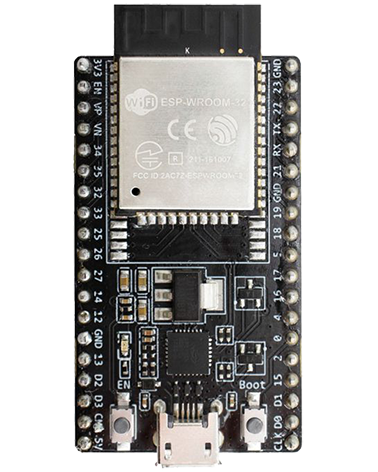Installing You don’t have to have installed EDP-IDF first, the VS plugin is very good and can do it all for you. Install Visual Studio Code Install Python Install ESP-IDF Visual Studio Code Extension from: https://marketplace.visualstudio.com/items?itemName=espressif.esp-idf-extension Visual Studio Code > Menu > View > Command Palette (CTRL+SHIFT+P) > type: configure esp-idf extensionChoose the ESP-IDF: Configure ESP-IDF […]
All posts by
Eclipse Issues
Build Errors The following Python requirements are not satisfied: Shown in the output windows, with another message like: To install the missing packages, please run “C:\Espressif\frameworks\esp-idf-v4.4.3\install.bat” Running the install.bat doesn’t resolve the issue or has errors. Is the version of Python you’ve installed (prequesit for Eclipse) quite new? You may need to remove it and […]
ESP-Prog programmer/debugger
ESP-PROG board the instructions Jumpers “IO0 ON/OFF” Linked (default) – Allow the ESP-Prog to set the IO0 line when programming via the serail interface. “Vprog” and “Vjtag” Removed (default) – The ESP-Prog will not provide a power output via its connection to your PCB3V3 – The ESP-Prog will output 3.3V via the power pin connection […]
Installing Eclipse IDE (Windows)
Our Eclipse IDE resources here may well be old, we’ve switched over to using VSCode Installing Eclipse IDE https://docs.espressif.com/projects/esp-idf/en/stable/esp32/get-started/eclipse-setup.html Install missing prerequisites Install Python (the Espressif Windows all-in-one toolchain installed embedded Python, not Python) from: https://www.python.org/downloads/(Installs to here by default: C:\Users\Dev\AppData\Local\Programs\Python\ )Note if the current Python release is very new you may want to select […]
Hardware overview
ESP32-S Series Faster, dual-core available, more GPIO, USB OTG available. ESP32-S2 Series Single-core 32-bit Xtensa LX7 CPU, up to 240 MHz320 KB SRAM, 128 KB ROM, and 16 KB RTC SRAMWiFi 2.4 GHz (IEEE 802.11b/g/n)No Bluetooth43 GPIOsUSB OTG, SPI, I2S, UART, I2C, LED PWM, LCD interfaces.Camera interface, ADC, DAC, touch sensor, temperature sensor. ESP32-S3 Series […]
.Specifications
Schematics https://esp32.com/viewtopic.php?f=12&t=344
LCD Screen
LCD Screen 3.2" 320 x pixels, 18bit colour LCD Controller ILI9341 controller, connects to ESP32 via SPI bus. Source code resources LCD support for the ESP32 seems a bit rudimentary at the moment, a bit wild west. You'll need to hunt around for libraries to try and do something nice and useful with the screen. https://github.com/espressif/esp-iot-solution/tree/master/components/spi_devices/lcd
Main Loop
Although FreeRTOS is all about creating tasks, you can just use a main loop approach to programms running on it if you want to. You simply need to ocassionally sleep so the RTOS can drop down to the Idle task, do any housekeeping and reset its watchdog timer. Here's a working example of a […]
Production Programming
Programming Adapter You need a suitable programming adapter, see our programming hardware page. Download the Espressif Windows software Download and install “Flash Download Tools” in the Tools section from: https://www.espressif.com/en/products/hardware/esp32/resources Programming instructions Run the flash download tool “flash_download_tool_v#.#.#.exe” Chip Type: The model of ESP32 being programmed (see the parts list or circuit schematic)Work Mode: DevelopLoad […]
malloc
Temporary memory example //CREATE TEMPORARY MEMORY BUFFER uint32_t *my_temporary_memory_buffer = malloc(1024 * sizeof(uint32_t)); //Allocate a block of size bytes of memory, returning a pointer to the beginning of the block. Use calloc() to do same but zero initialise the buffer. if (my_temporary_memory_buffer != NULL) { //Use my_temporary_memory_buffer as needed my_temporary_memory_buffer[0] = 1234; //RELEASE TEMPORARY MEMORY […]

